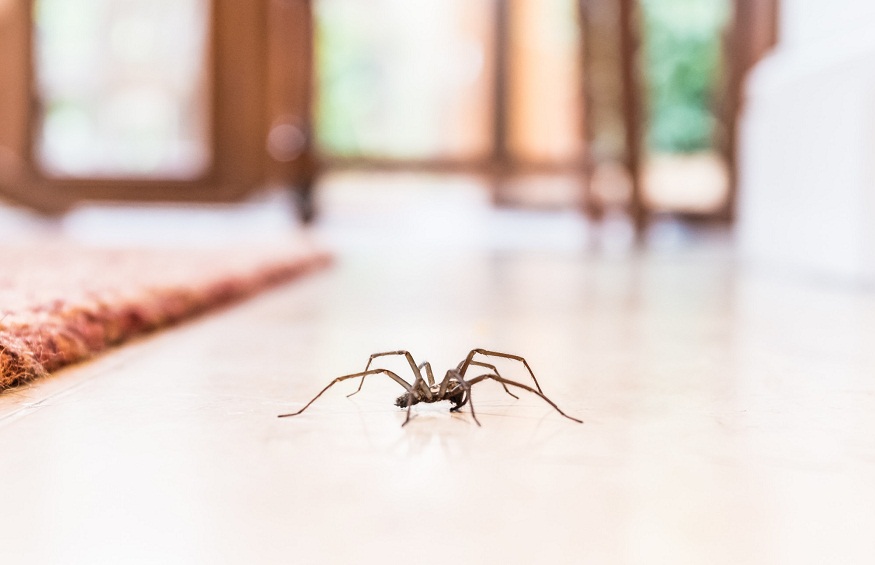7 Facts About the Most Common Types of Spiders in the USA
There are more than 45,000 known species of spiders in the world. Many people get freaked out when they see a spider, even though most spiders are harmless and even beneficial. In fact, many spiders eat other pests and never interact with their human cohabitants.
However, with that said, there are still some spiders that should be avoided. Are you interested in learning facts about the most common types of spiders in the United States? If so, then keep on reading and we’ll take you through everything you’ll want to know!

1. American House Spider (Parasteatoda tepidariorum)
The American house spider is a comb-footed spider. This kind of spider is part of a family known as cobweb spiders. That’s because they like to build webs in places like crawl spaces, closets, and basements.
They’re usually tan, brown, or gray with dark brown spots. Including its legs, the American house spider is typically around the size of a nickel.
These spiders are usually harmless although they can make messy webs that appear unsightly.
2. Long-Bodied Cellar Spider (Pholcus phalangioides)
You probably know this spider by the name of daddy longlegs. It should be noted that the long-bodied cellar spider isn’t actually a true daddy long legs. The real daddy long legs is a harvest man arachnid that has only one body section and two eyes.
Spiders, like the long-bodied cellar spider, tend to have eight eyes and two body sections.
The long-bodied cellar spider make webs, usually in garages, crawl spaces, cellars, basements, and other dark areas.
These spiders are either gray, beige, or brown. They have small, round bodies and long, skinny legs. Thankfully, cellar spiders aren’t venomous.
3. Brown Recluse (Loxosceles reclusa)
The brown recluse is part of the brown spider family. It can be found in several states and lives in climates that range from arid desert regions in Arizona to the high humidity of Florida to the cooler weather in the Midwest.
You can find a brown recluse indoors in furniture, between walls, in crawl spaces, attics, basements, and even in clothes. These spiders usually make their way into homes by sneaking into bags and boxes.
This spider’s venom has a cytotox in that can affect the tissue at the site of the bite. If you get bit by a brown recluse, you’ll want to seek medical attention immediately. Dangerous reactions to this spider’s venom can occur.
These reactions might include but aren’t limited to pain, rash, fever, chills, and nausea. Children are more sensitive than healthy adults to spider bites and their reactions could be life-threatening.
4. Sac Spiders (Corinnidae, Families Clubionidae, Miturgidae)
Sac spiders don’t produce webs. You’ll likely find these spiders high along the wall and near the ceiling. This spider is active throughout the year, typically during the night.
These spiders are beige, yellow, or light-colored. They have an oval body and two rows of eight small eyes.
While sac spiders are harmless to most people, they can produce slight soreness and swelling at the site. Any person who has sensitivities or allergies to spider bites might experience a reaction that could warrant treatment.
5. Jumping Spiders (Family Salticidae)
Jumping spiders usually hunt their prey during the daytime. You might find jumping spiders along a wall, inside of a screen door, window, or any surface that’s exposed to daylight. These spiders move by making quick jumps.
Jumping spiders tend to be beige, gray, tan, black, or brown. They’re almost an inch inch and have compact bodies. They also have dense hairs and their front legs are longer than other spiders.
When a jumping spider bites you, it will feel similar to a bee sting. However, these bites are usually harmless. However, children and people who are allergic to spider bites might experience reactions.
6. Wolf Spiders (Family Lycosidae)
Wolf spiders are bigger than most of the other typical American household spiders. They might enter the home through windows, foundation cracks, or through an attached garage.
A wolf spider is considered a hunting spider and it likes to eat insects. In fact, wolf spiders can even make good pets.
Wolf spiders are beige, tan, black, or brown. They’re large and their bodies are usually longer than an inch. These spiders have hairy legs and elongated bodies.
Although a wolf spider might be mistaken for a brown recluse, the wolf spider is harmless to people. However, a person who is allergic to spider bites should still avoid these spiders.
7. Hobo Spider/Funnel weaver (Tegenaria agrestis)
A hobo spider can be considered an aggressive spider. This kind of spider is also known as a funnel weaver because it builds funnel-like webs. Because they are brown in color, the hobo spiders are often mistaken for wolf spiders or brown recluses.
You can find these spiders in dark parts of the basement or hiding under piles of wood in the fireplace.
These spiders aren’t dangerous. However, if they bite you, you might notice some irritation at the site of the bite.
The Importance of Knowing About the Most Common Types of Spiders in the USA
Spiders are absolutely fascinating creatures. Hopefully, after reading the above article, you now feel that you’ve learned some useful facts about the most common types of spiders in the United States. You can use this information to know which spiders to avoid and which ones to simply leave alone.
Are you looking for other helpful articles? If so, then make sure to check out the rest of our site for more!













